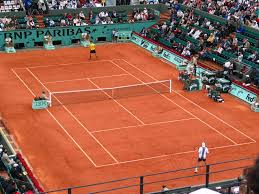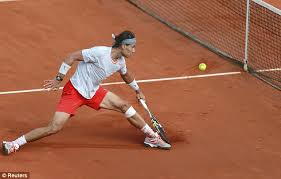The Red Clay Surface at the French Open
Posted by Tennis Supplies and Equipment on 12th Jun 2014

Since the French Open was going on for the past two weeks and completed on Sunday, I thought we would discuss the surface at the Roland Garros. The red clay surface is one of the most recognizable in the tennis world. It is the only clay tennis surface in which a Grand Slam tournament is held.
The surface is made up of four layers - ten inches of stone, six inches of a water filtering slag product, four inches of limestone and approximately three millimeters of crush red brick. The most daunting task for the grounds crew at Roland Garros during the French Open is keeping the clay moist. During each match, the grounds crew rakes the surface. At the end of each set the lines are swept. At the end of each match, the entire tennis court is watered to keep the clay moist so it doesn't blow away as well as to retain its rich, dark red color. At the end of the day, the tennis court is watered again, and then covered overnight.
The next day, the grounds crew removes the cover, scraps the court and spreads calcium chloride on the court so that the clay maintains its moisture and color. And the process repeats.
The characteristics of playing on the red clay is that it requires a specific type of shot making and movement. Clay court play is characterized as slow, because the balls bounce high and slow as compared to other surfaces. The play will be from baseline to baseline and more defensive than it will be a power game. There are fewer unreturnable shots and winners, therefore players that are more steady and consistent tend to do well. The surface favors players that utilize the "western grip" which allows for more topspin and high kicking shots. Because play is more baseline to baseline, the drop shot is very effective on clay tennis courts.
Players that move well tend to perform well on clay since they can slide into shots versus the abrupt stopping that is characteristic of grass and hard tennis courts. Rallies tend to be longer on clay courts so physical (as well as mental) stamina are required from the players.
Below is an image of Nadal, aka. the "King of Clay", sliding on the clay surface and utilizing what looks to be a drop shot:

